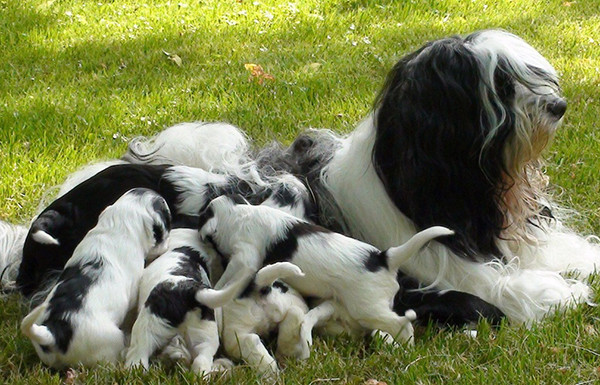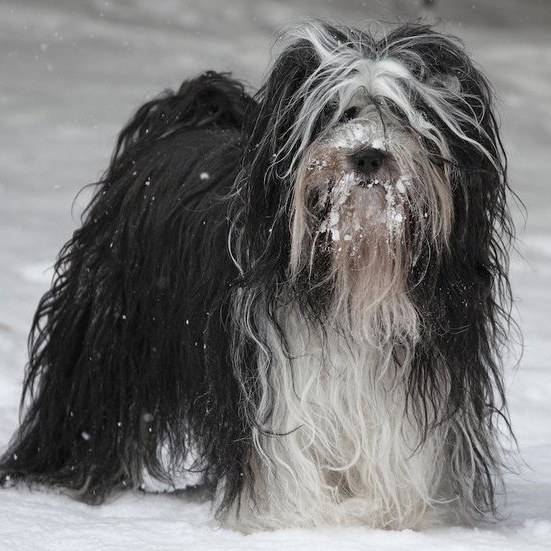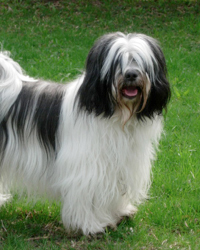Heritage: Known as the ‘little people’, the Tibetan Terrier was the companion of the Nomads of the mountains of Tibet, also thought to be valued herders for their livestock. They were valued by the Monks in the monasteries and considered good luck charms and watchdogs. They were never sold, but on occasion given as gifts to visiting dignitaries. This is an ancient breed.
Height: 14-16″
Weight: 18-30 lbs. Weight proportionate to the height maintaining a sturdy, compact breed.
Coat: Double coat. Undercoat fine wool, topcoat profuse, fine but not silky or woolly. Either straight or wavy. The coat is long but should not hang to the ground. The head carries a fall of hair over the eyes. Regular grooming is a must to prevent softer undercoat matting into the outer coat. Adults need thorough grooming once a week, more often when going through the onetime puppy ‘blow’, when the youngster is transitioning from a puppy coat to an adult coat. Bath as needed. Coat must not be trimmed or sculpted for conformation showing. Non-conformation dogs may be clipped down into a puppy clip or left natural.
Colours: Any colour or combination of colours including white, nose leather must be black, eyelids dark. There are chocolates (nose brown) and although beautiful and just as wonderful companions, ineligible for showing and not used in breeding.
Unique Breed Features: The Tibetan Terrier has a large FLAT foot, important for travel on the rocky snowy terrain of the Himalayan mountains of Tibet. That heavy profuse double coat is another distinguishing feature of this breed. They also have wide nostrils for breathing in as much of the thin mountain air as possible.
Activity: Medium level energy. Happy to accompany their owners on a long walk, or playtime in the backyard. Just as happy to lie at your feet or even better, behind you on the top of the sofa!
Temperament: Loyal family dogs that are wonderful companions. Sometimes initially shy around strangers. Excellent ‘watch’ dogs. Playful. Intelligent. Sensitive.
Diet: Good quality food of medium protein level.
Crate training is recommended to protect the inquisitive puppy as well as help in housebreaking.
Early socialization and basic companion training recommended.



